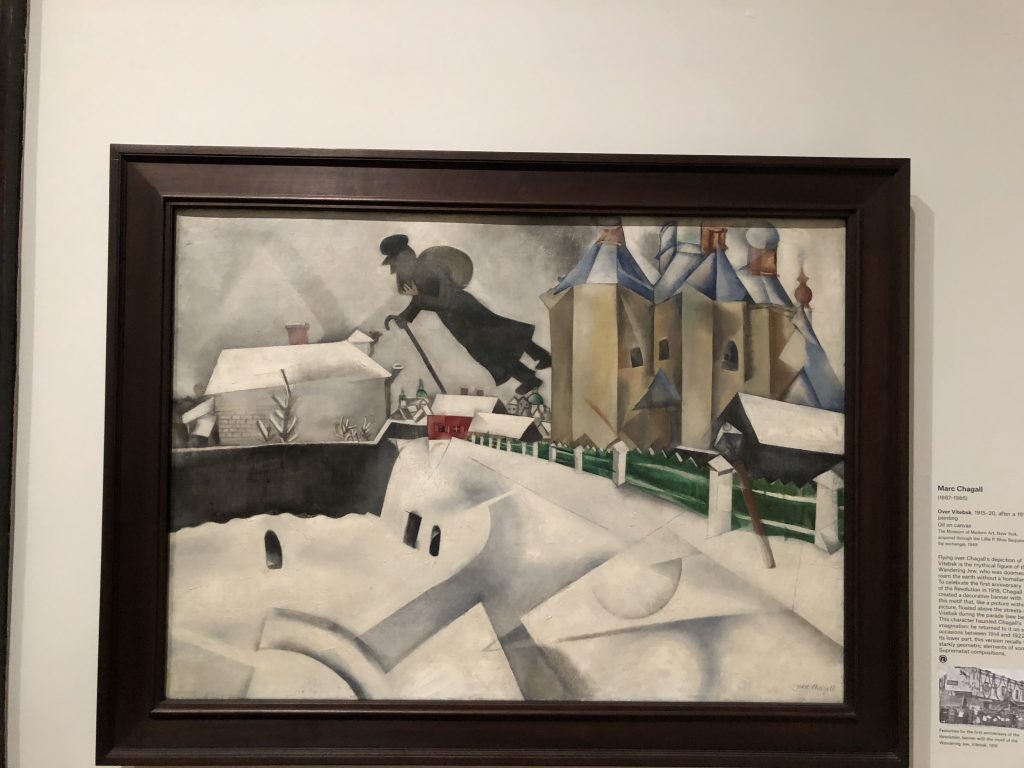
Beat the Whites with the Red Wedge by El Lissitzky
El Lissitsky’s print of Beat the Whites with the Red Wedge served as a controversial piece of work during the Russian civil war because of the message it sent out to the public. Firstly, Lissitsky uses more constructed geometric shaped for his print, this is a new and unusual for artists at his time but he uses the geometric shapes to compliment his ideas about the political situation in Russia at the time. Another way Lissitsky’s print is avant-garde because it uses minimal ideas, to express his idea. Even in the painting regardless of the meaning, one could see Lissitsky utilized single Russian words which pushes the idea that Lissitkey wanted to use the least of visual stimuli to get a concept across.
Lissitskys work pushes boundaries of representation. His work is described as an example of an agitprop or Soviet political propaganda which seems ironic because political propaganda usually has a phrase or a limerick to make sure the person viewing it could remember the stance of the argument, but in Lissitskys work he simply writes the Russian words for what the viewer is seeing. Although his work could be classified as a mimesis in the sense that it represents the idea of a revolution which is something that occurs often in real life, I personally do believe his work is more abstract. The fact that Lissitsky uses colors like red and white and presents them with the connotation of winner and loser is somewhat interesting. In addition to the usage of color, Lissitsky’s choice of shapes to represent the two forces in the civil war is interesting as well. The wedge serves as the winning force because of its penetrative shape. At an immediate glance, one can think that the red wedge is infiltrating the white and when one looks at the shape of the wedge and the narrowness of the shape it looks as if it is impaling the white circle. In addition to impaling the circle, it seems as if the wedge reaches the exact center of the white circle, which for me means that the Russians have infiltrated the root of the Anti- Bolshevik forces. The political statement behind the art is described as the reds winning since the reds represent the Russian forces while the white is Anti- Bolshevicks. I think that in terms of style Lissitsky experimented with shapes and color more so than other artists that did during the century, the fact that the shapes and color were there for a symbolic purpose which was different from other painters who often manipulated the contents of their paintings for more emotional purposes.














